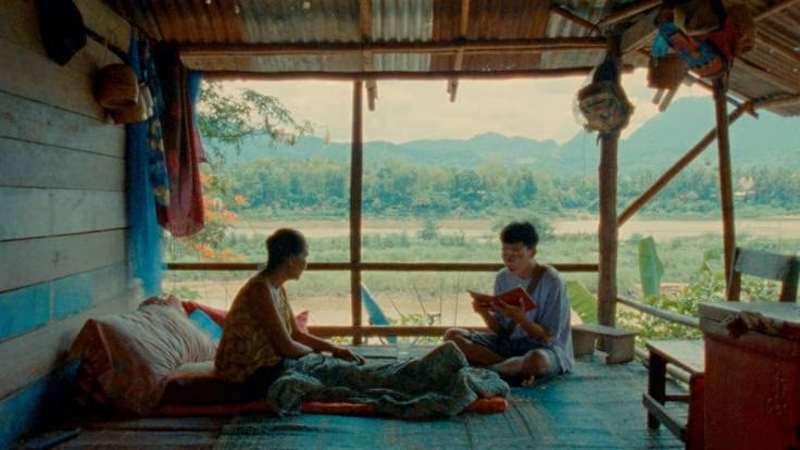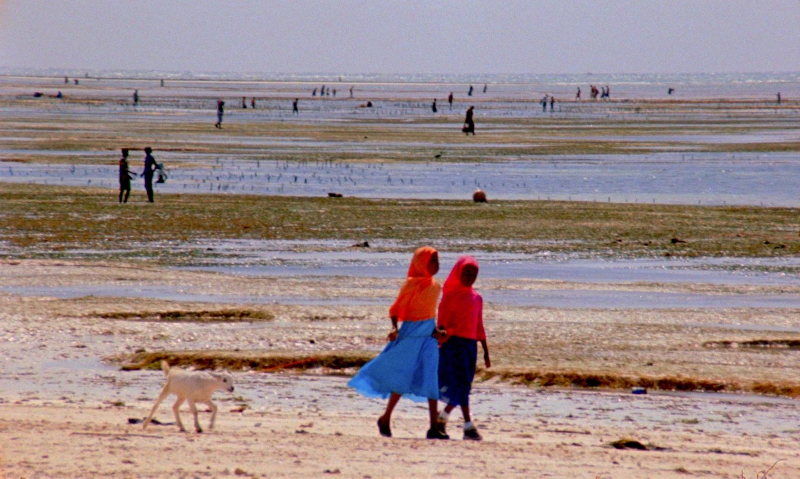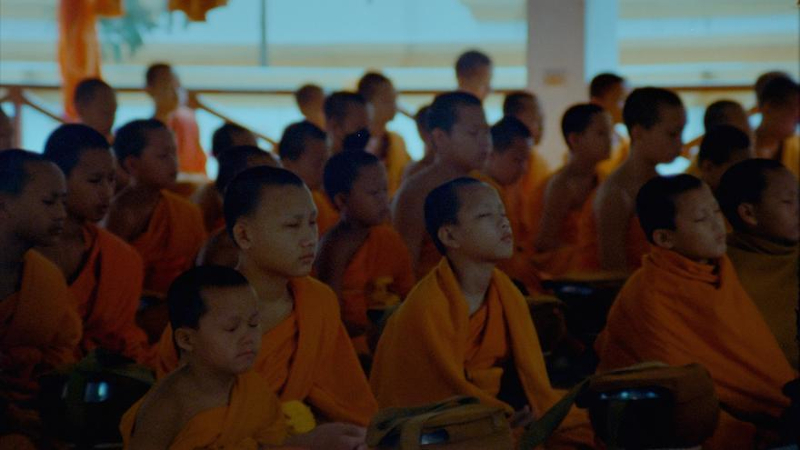Director – Lois Patiño – 2023 – South Korea, Spain – Cert. U –113m
*****
The story of two lives – an old woman dying in Laos and a goat born in Zanzibar – and the connection between them – is out in cinemas in the UK in the new year on Friday, January 26th following its screening in the 2023 London Film Festival
You think you’ve seen everything there is to see in movies, and then along comes a movie that does something unexpected that completely breaks the mould. In the middle of this film, we are invited to close our eyes and not open them again until asked; if we follow this instruction, something extraordinary occurs.
The word Samsara is used in a number of Asian religious systems (notably Hinduism and Buddhism) to denote the idea of a constant cycle of reincarnation: you are born, you die, you are reborn in another form, you die, you are reborn in another form, an so on. This idea is contrary to that of the Judeo-Christian religions in which you are born, you die, once only, and you are judged.
What Samsara does so brilliantly is show us the first of these two systems, showing the end of one life and the beginning of another.
You’d be forgiven for thinking this was not a Spanish movie. It doesn’t take place in Spain and none of the characters speak Spanish or have any connection to that country. Indeed, it was produced under a programme encouraging film production at Korea’s Jeongju Film Festival.
The first of three sections takes place in rural Laos, starting off with lengthy shots of Buddhist monks, old and young, living at a monastery. The story gradually gives way to that of a young man, recently returned to the area from military training, He pays regular visits to an old woman, who is not only sick but slowly dying, and reads to her passages from the Tibetan Book Of The Dead – a book which, as he says, is designed to be read out loud to other people. It’s hot and she doesn’t do much – just lies on her bed.

As the old woman nears death, the film’s audience is asked to close its eyes and not open them again until invited to do so. There follows a sequence of sound and visuals… Yes, you read that right. This section of the film is designed to be experienced with eyes closed, but in that state, through the eyelids, you will perceive such things as flashes of light. White or coloured. Also, you hear strange sounds. Exactly what it is like to die – regardless of any religious belief about how the process works or what happens – none of us can ever truly know until we go through that process ourselves.
As an attempt to capture that, this is certainly believable… Much more so than more traditional Western movie attempts. Think of the trippy light show which no-one understands, the awakening in the eighteenth century room and the rebirth as a giant embryo at the end of 2001: A Space Odyssey (Stanley Kubrick, 1968). That’s better than most: Brainstorm (Douglas Trumbull, 1983 – Trumbull was behind those ‘slit scan’ effects on 2001) posited a realm of floating angels to signify an afterlife; Twin Peaks: Fire Walk With Me (David Lynch, 1992) ends with a sequence where the heroine slowly dies, with an angel lifted from fifteenth century Western painting floating around in expectant attendance, for want of an image that would make sense to a person in our post-Judeo-Christian culture at the present time, which this particular image doesn’t really.
If the eyes closed sequence represents the second section, this is not (as in the above movies) placed at or towards the end of the film as the narrative reaches its conclusion, but rather in the middle of the who narrative. There follows a third and final section. So ingrained are these Judeo-Christian ideas of death being the end of life, that I found on an almost subliminal level I expected this to be more or less the end of the film. But it isn’t anywhere near the end at all – there follows a third section, presaged by a voice on the soundtrack asking you to “open your eyes” – as long and as significant as the first.
In Zanzibar.

Not a country within the Buddhist system of belief: the locals are Muslims, so reincarnation will be far from their thought just as it is in the post-Judeo-Christian Western world. A goat is born, and a human girl child looks after it against a backdrop of a local coastal village fishing economy. The goat is tethered, so its movement is restricted; it can only go so far. The child both treats the young goat kid with kindness and finds herself fascinated by it and the boundaries of the life in which it finds itself living.
However, to describe the film is not to do it justice: quite simply, this is a film like no other and it cries out to be seen. Well, perhaps seen is the wrong word: this film cries out to be experienced by cinema audiences. And that experience is like nothing you’ve ever experienced in a cinema. Altogether, a remarkable achievement.
Samsara is out in cinemas in the UK in the new year on Friday, January 26th following its screening in the 2023 London Film Festival which ran from Wednesday, October 4th to Sunday, October 15th.
Trailer:
Clip (LFF):
Clip (Berlinale):
